Search Images
Browse Content (p. 1234)
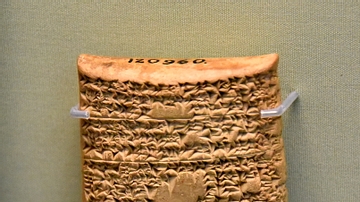
Image
Mesoptamian Tablet Describing Glass Manufacture
From the cuneiform inscriptions on this clay tablet we can conclude that recipes for making red glass were written with a made-up ancient date to give the impression of authority. Circa 1400-1200 BCE. Probably from Tell Umar (Seleucia on...

Image
Men with Shields & Spears from Persepolis
Limestone wall relief showing two men carrying shields and spears. Their distinctive costume identifies them as members of an entourage from the Land of Skudra (Thrace). From Persepolis, the Palace Terrace of Darius I (521-486 BCE), modern-day...
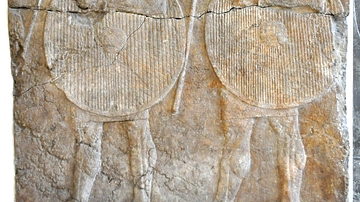
Image
Assyrian Mercenaries
This gypsum wall panel depicts two bare-footed Assyria soldiers marching to the left. The bent tip on their helmets identify them as mercenaries. Neo-Assyrian Period, reign of Sennacherib, 704-680 BCE. From the South-West Palace at Nineveh...
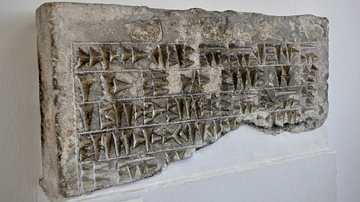
Image
Inscription of the Urartian King Menua
The cuneiform inscription on this block mentions king Menua, son of the king Ishpuini. Menua was the 5th king of Urartu. From Anzaf, 10 kilometers northeast of Van (of eastern Turkey). c. 810 to c. 785/80 BCE. (Pergamon Museum, Berlin, Germany...
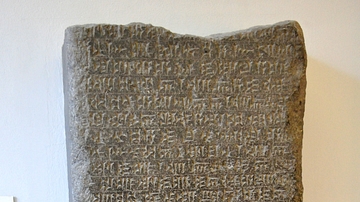
Image
Stele of the Urartian King Rusa II
The inscription on this stele narrates the foundation of a small residence, Rusachinili, near the Urartian capital, Tushpa, and about its water supply (irrigation canals and dam) by the Urartian king Rusa II. Circa 685-645 BCE. From Keshish-Gol...
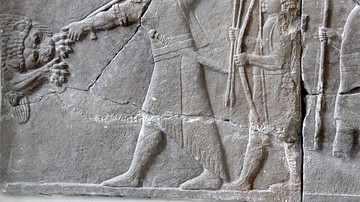
Image
Assyrian Lion Hunt Relief, Nineveh
Gypsum wall relief depicting the typical royal hunting of lions, part of a longer sequence. The king, Ashurbanipal II, thrusts a spear onto a leaping and furious lion. Behind him, an Elamite squire assists him. Partially appearing on the...
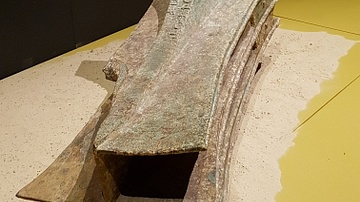
Image
Rostrum from a Roman Warship (Detail)
Rostrum from a Roman warship used in the Battle of the Aegates Islands. C. 250-241 BCE. Soprintendenza del Mare, (National Maritime Museum, Sydney Australia). Eleven rostra have been recovered so far from the site of the Battle of the...
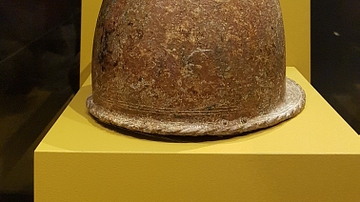
Image
Helmet from The Battle of The Aegates Islands
An iron helmet from the Battle of the Aegates Islands. 241 BCE. Soprintendenza del Mare, (National Maritime Museum, Sydney Australia)
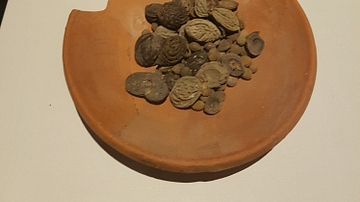
Image
Roman Plate with Fruit Seeds
A plate containing fruit seeds. Ostia, 4th century CE. Museo delle Navi Romane di Fiumicino, (National Maritime Museum, Sydney Australia) Found on one of the ships excavated at Portus, the plate was made in the Roman province of Africa...
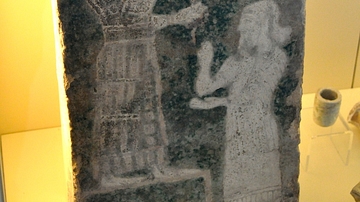
Image
Worship Scene from Assur
This is a glazed ceramic tile. A man stands and prays before Shamash, the Sun God. Symbols of Mesopotamian deities appear on the upper part. Neo-Assyrian Period, 8th century BCE. From Assur (Ashur; modern-day Qal'at Sherqat). (Pergamon Museum...